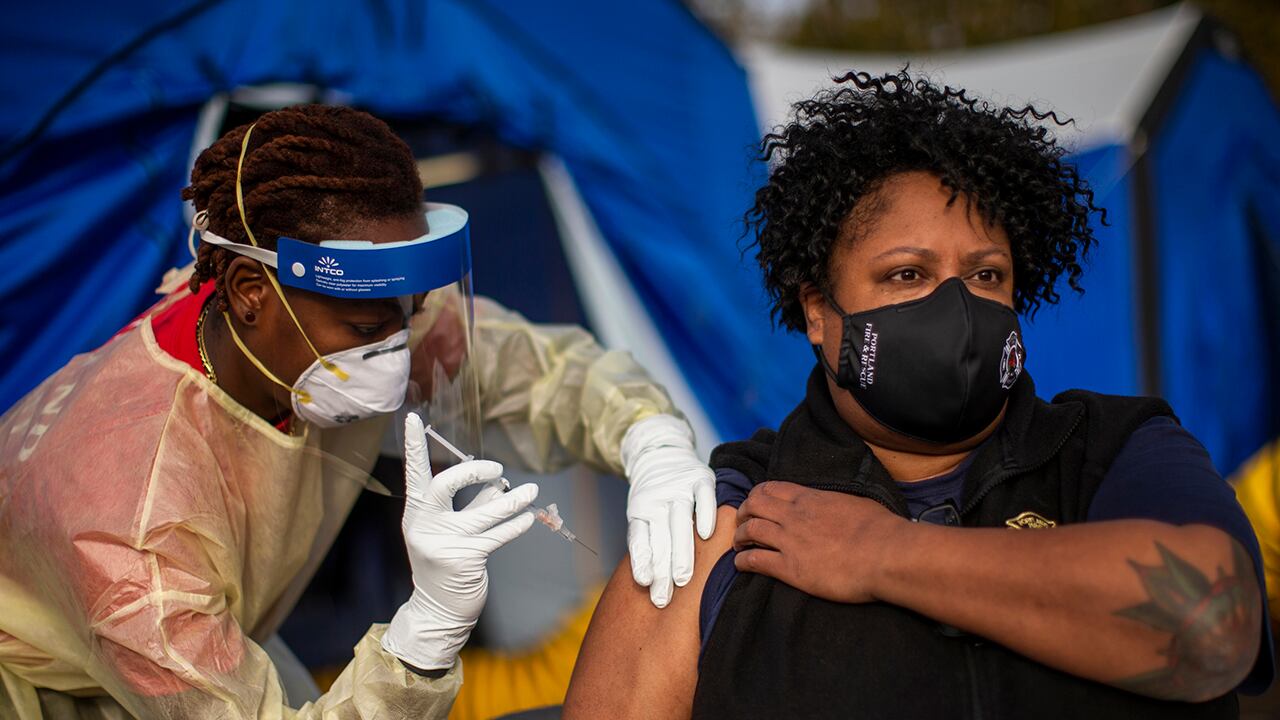Oregon Department of Corrections staff are responsible for all but one COVID-19 outbreak in state prisons, according to the department's infectious disease doctor. But only 55% of prison staff will elect to get the vaccine, the state estimates.
"Almost every outbreak in the ODOC facilities has been caused by staff members bringing the virus into the prison before they were symptomatic," said Joe Bugher, the department's assistant director for health services, in a Jan. 27 declaration in a federal lawsuit. "With limited supplies available, the state of Oregon determined that the most effective means of slowing transmission through the use of vaccines was to administer vaccines to staff as quickly as possible."
But in the same declaration, Bugher conceded the difficulty of convincing prison staff to get vaccinated.
The state estimates that "up to 55% of staff would accept the vaccine," Bugher said. "The national average for acceptance of the COVID-19 vaccine is around this number."
The national acceptance rate is closer to 61%, according to a December 2020 study published in The Journal of the American Medical Association. (That same study found that vaccine acceptance rates varied based on political ideology: 44% for Republicans, and 77% for Democrats.) Beyond that, Dr. Anthony Fauci, the country's top-ranking infectious disease doctor, told The New York Times in December that herd immunity could be achieved when about 90% of the population was vaccinated.
Other state and city agencies have surpassed vaccinating the majority of employees. Portland Fire & Rescue says 80% of its sworn staff has been vaccinated. The Portland Police Bureau says, as of Feb. 9, it has vaccinated 62% of sworn staff. Oregon Health & Science University has vaccinated at least 70% of its staff and students so far.
If past is prologue, the Department of Corrections might have an uphill battle achieving similar rates. For months, the agency struggled to enforce mask-wearing among its approximately 4,600 employees, with most resistance from corrections officers.
Dr. Daniel Dewsnup, the department's infectious disease physician, said in a November deposition, filed in federal court in January, that in late spring and early summer he witnessed fewer than 10% of prison staffers wearing masks. In July, after months of mask-flouting among staff, DOC deputy director Heidi Steward sent out a memo demanding mask use.
Questioned during the deposition, Dewsnup speculated as to why staff resists wearing masks.
"I don't know: COVID rebellion, confusion, politicization, orneriness," Dewsnup said. "I don't think it was a lack of education, but lack of acceptance of education. There are still large parts of Eastern Oregon and—well, everywhere, really…50 percent of the population may believe that masking is part of a conspiracy. I can't explain that rationally."
Dewsnup echoed the same statistic as Bugher: All but one COVID-19 infection in Oregon prisons can be traced back to employees.
"The only way to get COVID into the institution is [to] have it come in through a staff member. With the exception of one, that's been the way that each of these outbreaks have started since April," Dewsnup said. "Everything has been staff-to-staff transmission and eventually staff-to-[inmate] transmission."
The agency "strongly encourages" but does not require COVID-19 vaccines. And it's no longer tracking who gets them.
The most recently publicized vaccination rates for DOC staff hover around 35%, but the agency stopped keeping track of vaccinations among staff after the department switched from vaccinating employees in house to sending them to pharmacies at Safeway, according to spokeswoman Jennifer Black.
"With Safeway now overseeing the process, DOC is no longer tracking or reporting staff vaccination numbers," Black said. "DOC does not require staff to report that they have received the vaccine as this would be considered a violation of HIPAA guidelines." (Black added that the numbers might eventually become available through the Oregon Health Authority.)
In the meantime, COVID rates in the state's prisons have continued to climb. Since the pandemic began, over 3,400 inmates—about a quarter of the state's total adult prison population—have tested positive for the virus. Forty-two have died. Separately, more than 800 staff have tested positive.
Dewsnup said that in some prisons, like Eastern Oregon Correctional Institution (458 total cases), Snake River Correctional Institution (487 cases) and the Oregon State Penitentiary (385 cases), the rates of COVID are so high that the prisons might acquire resistance through sheer exposure to the virus (Dewsnup later clarified that he said so jokingly.)
"Yeah, I think EOCI, Snake River and OSP all have very high rates," Dewsnup said with a chuckle. "They're almost reaching herd immunity."
Rachel Monahan contributed reporting to this story.
